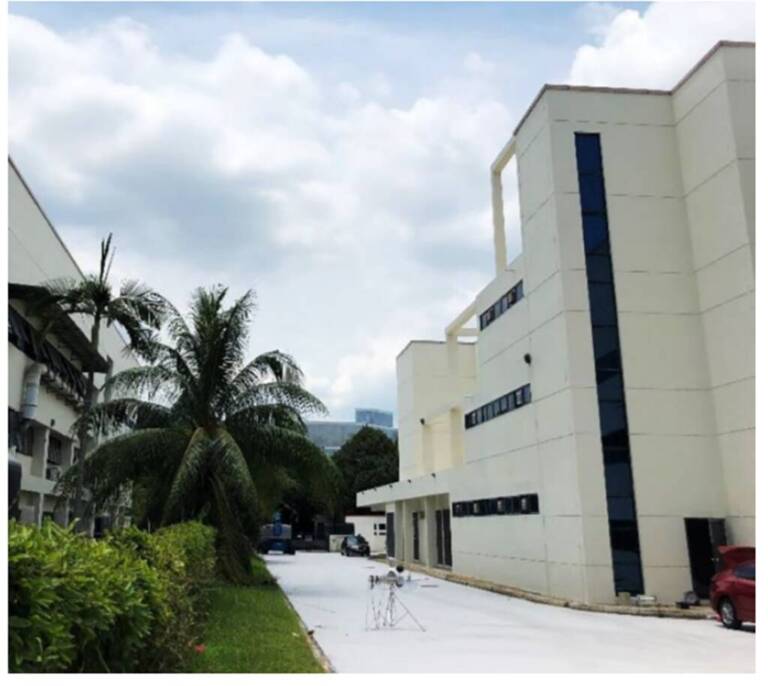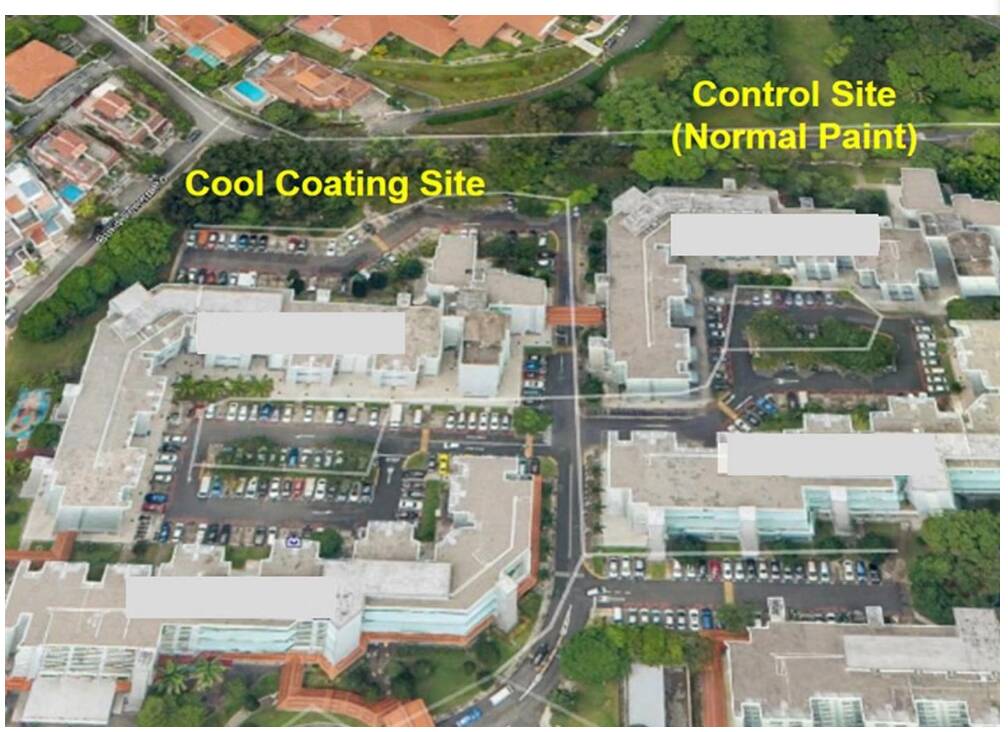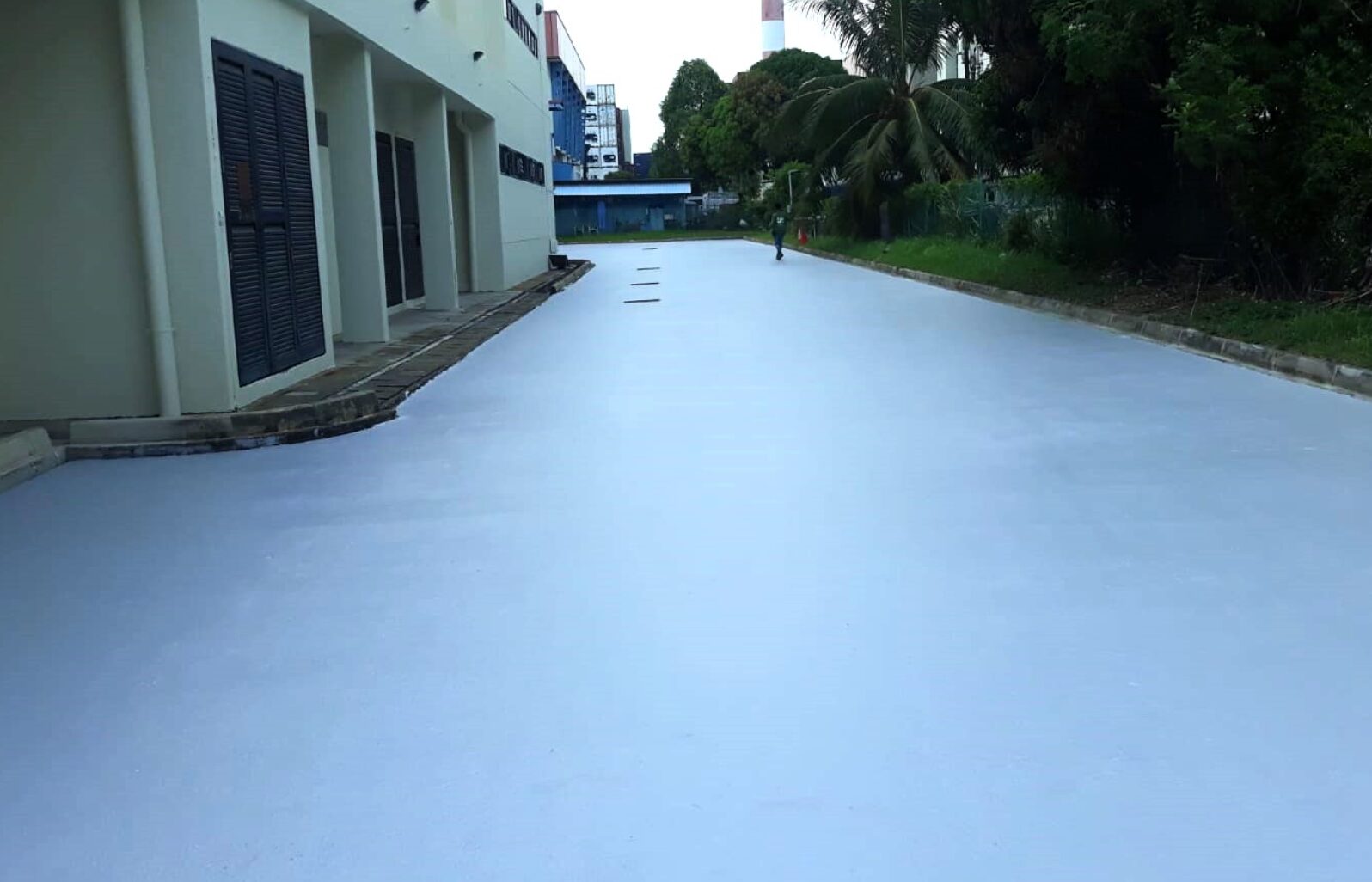Cold paint to lower the temperature of cities without using energy

NTU researchers conducted a real-world study in Singapore and found that cold paint coatings reduce air temperature by up to two degrees Celsius and the thermal comfort level of pedestrians by up to 1.5 degrees Celsius. Cool paint coatings can be a promising solution for urban cooling and mitigating the urban heat island effect.
Cold paint coatings are not made from regular paints, but contain additives that reflect the sun's heat to reduce surface heat absorption and emission. They were presented as a way to cool the urban area and mitigate the Urban Heat Island (UHI) effect, a phenomenon in which urban areas experience warmer temperatures than their surroundings.
So far, most studies on cold paint coatings have been based on simulations or tested in small-scale models, and understanding of the application in real-world scenarios is limited.
Now, NTU researchers have conducted a first-of-its-kind real-world study in the tropics to comprehensively evaluate the effectiveness of cool paint coatings in reducing urban heat.
The team coated the roofs, walls and street pavements of an industrial area in Singapore and found that, compared to an adjacent uncoated area, the coated environment was up to two degrees Celsius cooler in the afternoon, with an improvement in the thermal comfort level of pedestrians by up to 1.5 degrees Celsius, measured using the Universal Thermal Climate Index – a common international standard for human outdoor temperature sensation that takes into account temperature, relative humidity, thermal radiation and wind speed.
Lead author Dr EVS Kiran Kumar Donthu, who completed the work as a researcher at the Energy Research Institute, said: “Our study provides evidence that cool paint coatings reduce heat build-up and contribute to the cooling of the urban environment. This is a minimally invasive solution for urban cooling that has an immediate effect, compared to other options that often require major urban redevelopment to implement. Furthermore, by reducing the amount of heat absorbed by urban structures, we also reduce the thermal load of buildings, consequently reducing energy consumption for internal air conditioning."
Lead researcher Associate Professor Wan Man Pun from NTU's School of Mechanical and Aerospace Engineering (MAE) said: “The study findings are not only relevant to cities in Singapore, where it is hot all year round, but also for other urban areas of the world. With global warming, people will look for more and more ways to stay cool. Our study validates how cool paint coatings can be a strategy to reduce the urban heat island effect in the future.”
The study, published in Sustainable Cities and Society in March, supports the NTU 2025 strategic plan, which seeks to address humanity's grand sustainability challenges and accelerate the translation of research findings into innovations that mitigate human impacts on environment.
Real-world experiments in 'road canyons'
To carry out their real-world experiments, the NTU researchers selected four rectangular buildings that created two parallel 'street canyons' – narrow streets lined with buildings – in an industrial area in western Singapore managed by JTC Corporation.
One canyon, or 'cool canyon', was coated with cool paints on the roofs, walls and road pavement, while the other (conventional) canyon remained as is as a 'control' for the experiment.
Using environmental sensors, the NTU team monitored conditions in the two canyons, which included air movement, surface and air temperatures, humidity and radiation, for two months to see how much the coatings of cold paint worked to reduce the heat of the city.
The researchers found that over a 24-hour cycle, the cold canyon saw up to a 30 percent reduction in heat released from built surfaces, resulting in the air temperature in the cold canyon being cooler than that of the conventional canyon up to two degrees Celsius during the hottest time of the day, around 4pm. As a result, pedestrians in the cold canyon can feel up to 1.5º Celsius (2.7º F) cooler.
The NTU research team also found that the air temperature in the cool canyon dropped because less heat was absorbed and stored by building walls, roofs and streets, and would later be released to heat the surrounding air or the interior of the building.
Compared to conventional roofs, the cool paint-coated roofs reflected 50 percent more sunlight and consequently absorbed up to 40 percent less heat, during the hottest part of a sunny day. The clad walls also prevented most heat from entering the industrial buildings.
Co-author Assistant Professor Ng Bing Feng from NTU's MAE School said: “Our study showed that the cold paint coating on the road significantly contributed to lowering the hottest temperatures in the cold canyon, confirming that cold paint coating can be a promising way to make urban areas cooler and more comfortable, especially during hot weather. We hope that the results of our study will encourage more urban planners to adopt cold paint coatings on more built surfaces, on a large scale."
In future research, the NTU team will focus on the durability of the cold paint coating over time, in the same location as the experiment. Because, in the end, the problem is that these coatings are also practical and usable in real constructions. The research has been and continues to be supported by JTC Corporation and the Housing & Development Board of Singapore.

Thanks to our Telegram channel you can stay updated on the publication of new Economic Scenarios articles.
The article Cold paint to lower the temperature of cities without using energy comes from Economic Scenarios .
This is a machine translation of a post published on Scenari Economici at the URL https://scenarieconomici.it/vernice-fredda-per-abbassare-la-temperatura-delle-citta-senza-utilizzare-energia/ on Thu, 28 Mar 2024 19:51:53 +0000.


